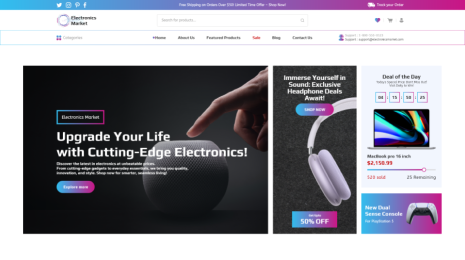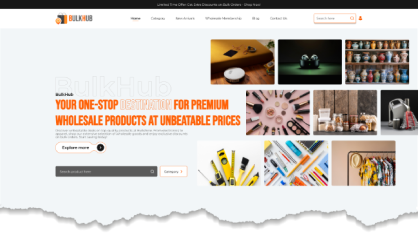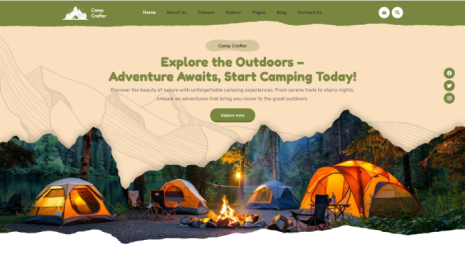
Introduction
In today's fast-paced digital landscape, having a compelling online presence is no longer a choice; it's a necessity. Users now expect nothing short of seamless, intuitive, and delightful experiences when navigating websites. This expectation emphasizes the crucial role of User Experience (UX) and why it has become a determining factor in a website's success. In this comprehensive guide, we'll unravel the world of UX Optimization, shedding light on ten invaluable tips that can significantly enhance your website's performance by improving its user experience.
Understanding the Essence of UX Optimization
At its core, UX Optimization revolves around crafting digital experiences that cater to the needs, desires, and expectations of users. It's about constructing a website that not only captures attention but also effortlessly guides visitors, ensuring they stay engaged and satisfied. Every element of your website, from its speed and layout to its content and navigation, plays a crucial role in shaping the overall user experience.
The Quest for an Exceptional User Experience
Picture a website where finding information is intuitive, pages load swiftly, and content is not only accessible but also engaging. This encapsulates the essence of a remarkable user experience. To achieve this, webmasters and designers invest time and effort into understanding their audience, streamlining designs, optimizing performance, and creating an environment where users feel at home.
10 Guiding Lights for UX Optimization

Consider this guide as a roadmap for enhancing your website's performance by embracing effective UX Optimization strategies. From optimizing website speed and ensuring mobile-friendliness to streamlining forms and employing visual hierarchy, we'll delve into ten actionable tips. These tips aren't just about improving metrics; they're about delighting users and making their digital journey enjoyable and memorable.
In the upcoming sections, we'll explore each tip in detail, highlighting how it contributes to a superior user experience and how, collectively, they can transform your website into a powerhouse of engagement and conversions.
Join us in this voyage through the realm of UX Optimization. Together, let's unlock the secrets that can make your website not only functional but fantastic—a place where users aren't just visitors, but active participants in an exceptional digital experience.
1. Conduct Comprehensive Audience Research to Inform UX Optimization

Understanding your target audience is fundamental to effective UX Optimization. Conduct thorough research into your audience's demographics, preferences, and behaviors. This knowledge allows you to tailor your website's design, content, and functionality to cater specifically to their needs, ensuring a more engaging and relevant user experience.
2. Optimize Website Speed to Enhance UX

Website speed plays a crucial role in delivering a seamless user experience. Slow-loading pages can frustrate visitors and drive them away. Optimizing your website's speed involves techniques such as minimizing image sizes, leveraging browser caching, and using efficient coding practices. A fast website ensures that visitors stay engaged and encourages them to explore further, significantly impacting UX in a positive manner. You can read our blog on WordPress speed optimization for more details.
3. Prioritize Intuitive Navigation and Structure for Enhanced UX
A well-structured and intuitive navigation system is vital for an optimal user experience. Clear navigation helps users easily find the information they seek. Utilize intuitive menus, logical page hierarchies, and strategically placed clickable buttons to guide users seamlessly throughout your website, thus enhancing overall UX.
4. Ensure a Seamless and Mobile-Friendly Experience through Responsive Design
With a significant portion of internet users accessing websites via mobile devices, having a responsive design is no longer just an option, but a necessity. A responsive design ensures your website looks and functions seamlessly across various screen sizes and devices, providing an excellent user experience regardless of the platform.
5. Enhance Content Readability and Accessibility for Improved UX
Content is at the heart of user engagement. Optimizing content readability involves using legible fonts, appropriate font sizes, and suitable color contrasts. Additionally, ensuring your website is accessible to all users, including those with disabilities, by following accessibility standards, significantly improves UX.
6. Optimize Call-to-Actions (CTAs) for Improved User Engagement and Conversions
Strategically placed and well-designed call-to-action buttons are crucial for driving user actions. Optimize CTAs by using compelling language, contrasting colors, and strategic placement on the page. A clear and enticing CTA motivates users to take the desired actions, significantly enhancing user engagement and conversions, which is a pivotal aspect of UX Optimization.
7. Minimize User Friction through Streamlined Forms
Forms often serve as a crucial point of interaction with users. Streamlining forms by simplifying them, minimizing the number of fields, and utilizing inline validation helps in reducing user friction. This, in turn, increases the likelihood of users completing forms, a vital aspect of UX Optimization.
8. Leverage A/B Testing for Continuous UX Improvement
A/B testing is a potent tool in the realm of UX optimization. Experimenting with different elements on your website, such as colors, layouts, and CTAs, helps determine what resonates best with your audience. Data-driven insights from A/B tests enable you to make informed decisions for ongoing UX enhancements, optimizing the user experience over time.
9. Incorporate a visual hierarchy to Enhance Communication
Visual hierarchy guides users' attention and aids in conveying essential information effectively. Utilize techniques like contrasting colors, varying font sizes, and appropriate spacing to create a clear visual hierarchy. This ensures that users can easily identify key messages and navigate through the content, enhancing the overall UX.
10. Collect and analyze User Feedback for Iterative UX Enhancements
User feedback is an invaluable resource for optimizing your website's user experience. Gathering feedback through surveys, user testing, and analytics helps you understand user pain points, preferences, and suggestions. Utilize this feedback to make iterative improvements to your website, enhancing the overall UX based on real user insights.
Conclusion
Investing time and effort into UX optimization is not just a strategic decision; it's a prerequisite for a website's success in the digital realm. The modern online landscape demands a user-centric approach, and that's precisely what UX optimization provides. By deeply understanding your audience, optimizing website speed, and prioritizing intuitive navigation and structure, you lay a strong foundation for an exceptional user experience.
UX optimization is a journey, not a destination. It involves continual analysis, adjustments, and enhancements. Through techniques like A/B testing and leveraging user feedback, you gain valuable insights into what works best for your audience. These insights empower informed decisions that further refine your website's UX, creating a positive feedback loop of improvement.
In essence, UX optimization, coupled with Premium WordPress themes, is about creating a digital space where users don’t just visit but actively engage and convert. It’s about ensuring that every click on your website is smooth, intuitive, and satisfying. This user-centric approach isn’t just beneficial for your audience; it’s a cornerstone of high-performing websites. Delighted users are more likely to stay, explore, buy, and come back.
So, embrace the principles of UX opt optimization a fundamental part of your digital strategy. Let your website be a testament to the fact that understanding and optimizing for the user experience is the key to success in today's competitive online landscape. The journey may have its challenges, but the end result—an exceptional user experience—makes it all worth it. Happy optimizing!









